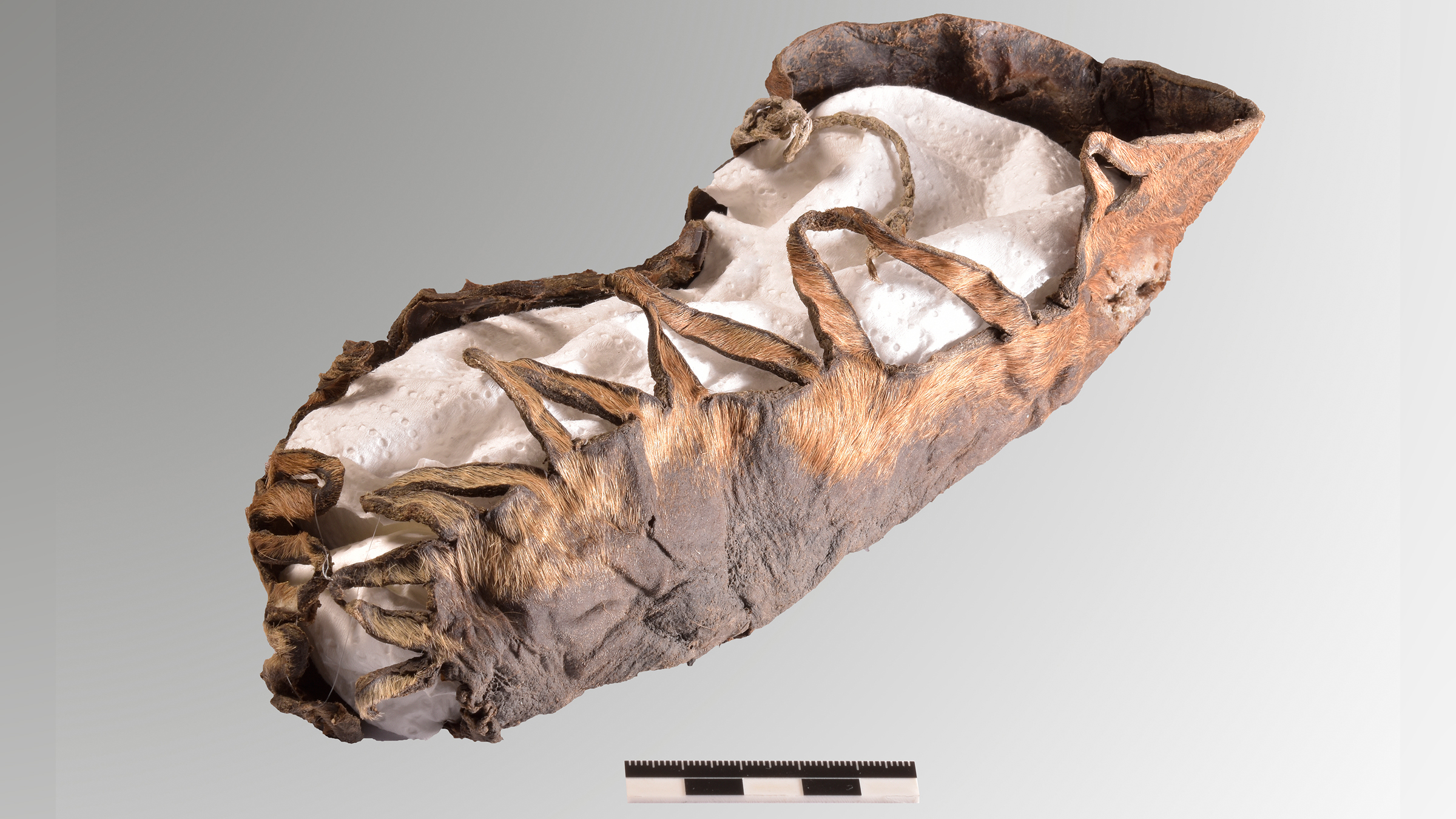'Outstanding' 2,200-year-old child's shoe discovered deep underground in Austrian mine
A second century B.C. leather shoe found in an Austrian mine offers 'extremely rare insight into the life of Iron Age miners.'

Deep underground in a rock-salt mine in Austria, archaeologists have made an "outstanding" discovery: the 2,200-year-old shoe of a child.
The mine's rock salt, which people have been mining since the Iron Age (800 B.C. to 1 B.C.) in the village of Dürrnberg near present-day Salzburg, preserved the well-crafted shoe, according to a translated statement from the German Mining Museum (DBM) in Bochum. The lone footwear is about a U.S. children's size 12 (European children's size 30).
"The condition of the shoe found is outstanding," Thomas Stöllner, the museum's research department head, said in the statement. "Organic materials generally decompose over time. Finds like this child's shoe … offer an extremely rare insight into the life of Iron Age miners."
Related: 1,700-year-old sandal found on a remote mountain in Norway
Archaeologists noticed that the leather shoe has a preserved remnant of lacing made from flax or linen, which hints at how the shoe was laced. The shoe's design indicates that the footgear was crafted in the second century B.C., according to the statement.
While only one shoe was found, its discovery suggests that children were underground in the mines more than two millennia ago.
The museum has been carrying out archaeological work in the mine since 2001. Near the shoe, archaeologists found the fragment of a wooden shovel and the remnants of a fur with lacing, which may have belonged to a fur hood.
Get the world’s most fascinating discoveries delivered straight to your inbox.
At the German Mining Museum, the public can go on tours to learn about hard coal, mining and mineral resources aboveground, as well as on a 0.7-mile-long (1.2 kilometers) underground route.

Laura is the managing editor at Live Science. She also runs the archaeology section and the Life's Little Mysteries series. Her work has appeared in The New York Times, Scholastic, Popular Science and Spectrum, a site on autism research. She has won multiple awards from the Society of Professional Journalists and the Washington Newspaper Publishers Association for her reporting at a weekly newspaper near Seattle. Laura holds a bachelor's degree in English literature and psychology from Washington University in St. Louis and a master's degree in science writing from NYU.


